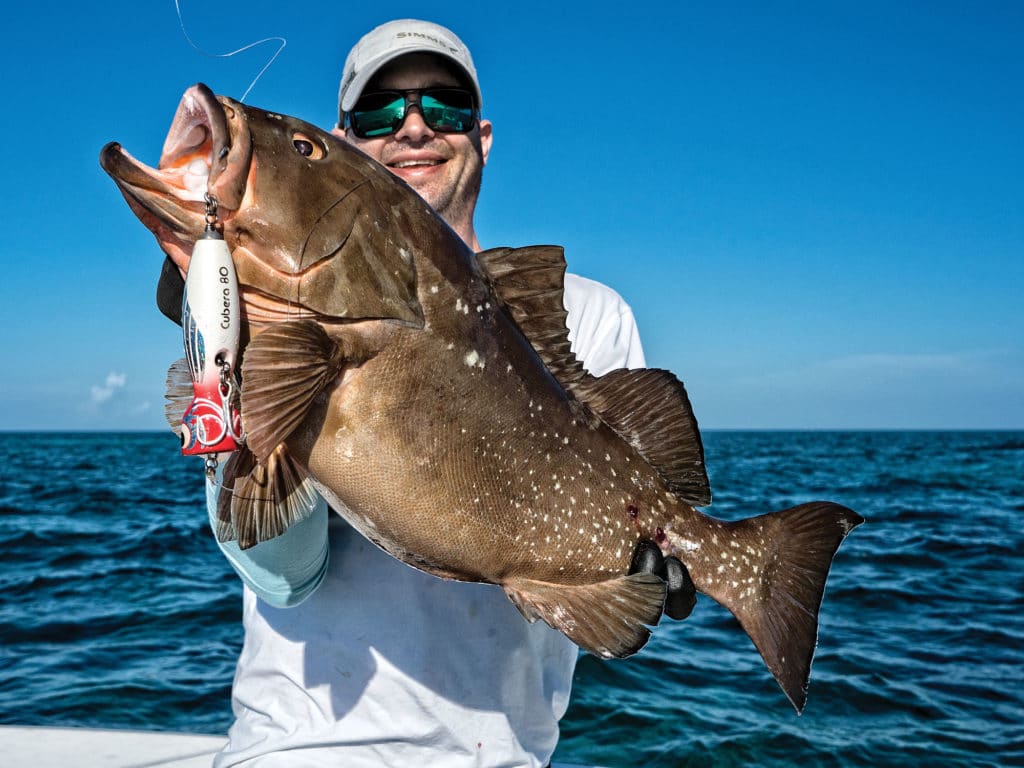
The surface ruptured with a violence I wasn’t used to — not the staccato pop of a snook, but an explosion of something round and angry.
My buddy’s huge popper vanished and his Stella 14000 — drag nearly locked — groaned as the fish surged to reach a patch reef just 10 feet below. We soon spotted a 12-pound red grouper, and Capt. Billy Delph hauled it on deck. It was only 9 a.m., yet this was already our fourth grouper on topwater plugs.
Sure, grouper and snapper are bottomfish supposed to be seduced away from structure only by deep-trolling plugs or dropping baits on reefs and wrecks, but don’t tell that to the fish in Dry Tortugas National Park — they just behave differently here. That’s because it’s a special place — vast, highly protected, and far from human populations — where at the right time of year, red grouper, black grouper, mutton snapper, and the occasional mangrove snapper, cobia, horse-eye jacks and amberjack venture onto shallow patch reefs to blast ballyhoo, and thus are susceptible to poppers and other artificials. It’s what casting over Florida reefs might have been like 50 years ago.
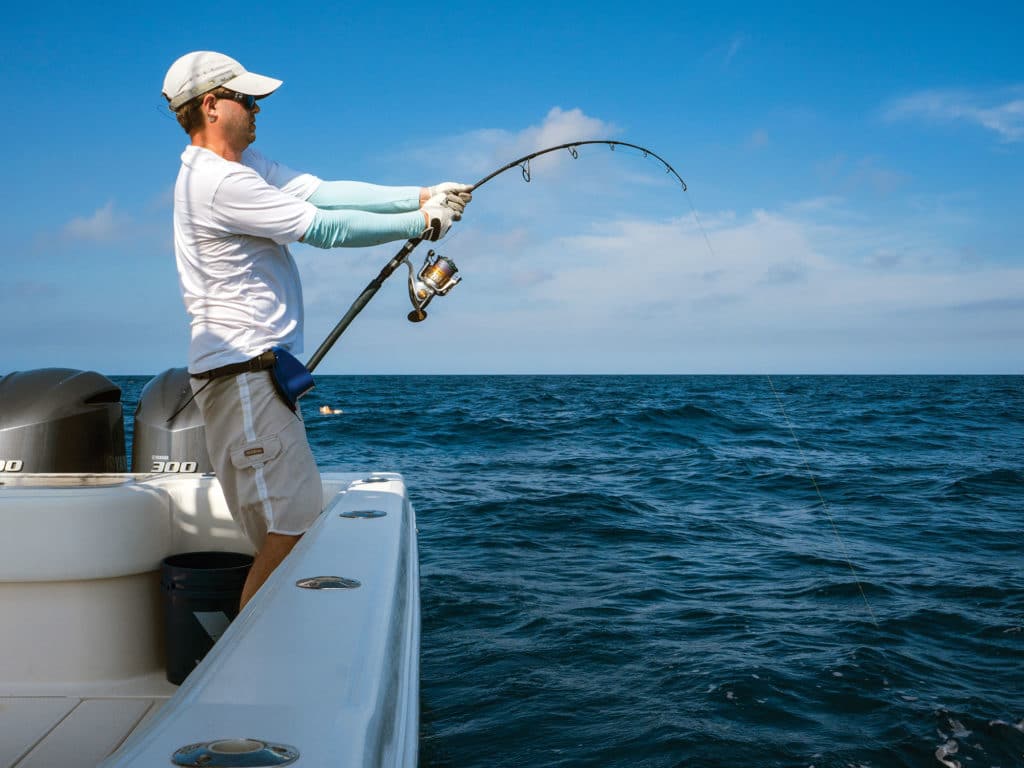
FISHING FROM THE PAST
“When I brought my dad, he was tickled pink. He said he felt like it brought him back in time to the way it used to be all around the Keys, and even up in Biscayne Bay, before reefs got overpressured,” Delph says. The Dry Tortugas sits 70 miles west of Key West. Save for a few small islands where Fort Jefferson stands, the 101-square-mile park is mostly underwater terrain — sections of patch reef surrounded by slopes and drops to 80 or as much as 200 feet, fading to the 1,800-foot lip of the continental shelf to the south. In 2007, the Park Service established a 46-square-mile no-take, no-anchor Research Natural Area in the northwest third of the park (excluding a 1-nautical-mile circle around Fort Jefferson, where fishing is allowed). This left 55 square miles of fishable water, much of it patch reef, for anglers to reap the benefits of the nearby reserve.
The result is grouper and snapper crazy enough to crush baits on top. “The strikes from the red grouper are just ferocious,” says Jorge Fidalgo, the angler responsible, in part, for rediscovering the topwater potential here. “They somersault over your lure. They jump two feet out of the water. They’re like a bass on steroids.” Fidalgo first conceived of popping in the Tortugas after getting snapper surface strikes off Bimini. These days, popping takes precedence over jigging on his Tortugas runs. “It’s more fun,” Fidalgo says. “The visual aspect of it outweighs the idea of filling a cooler with bigger fish. It’s more exciting.”
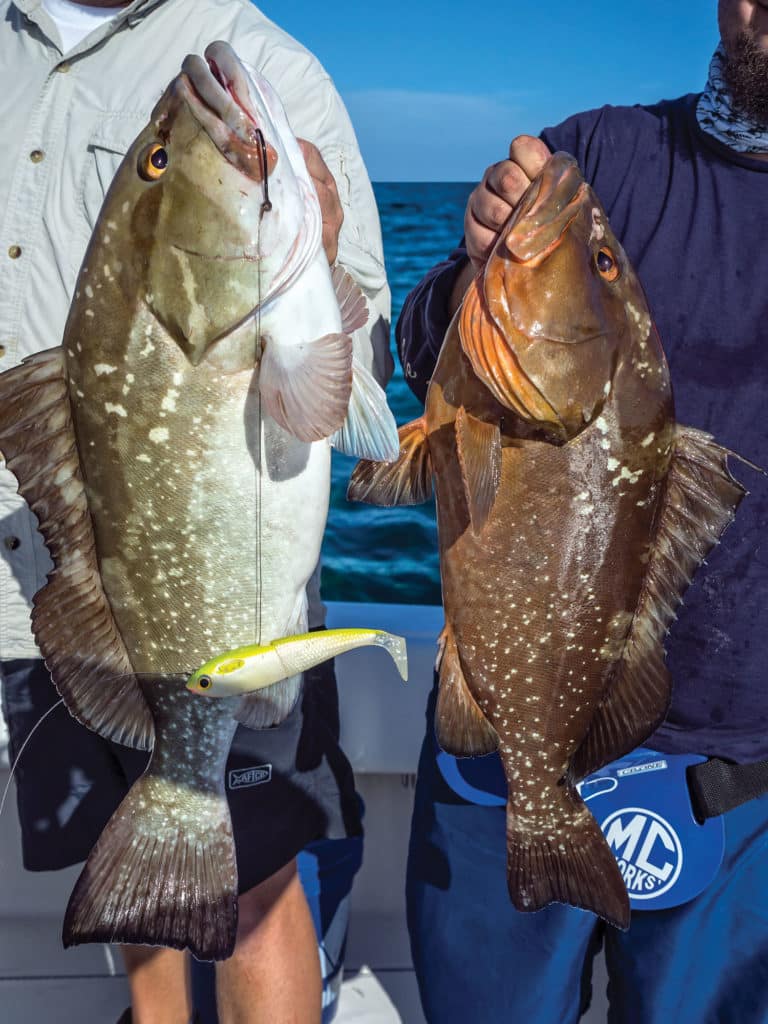
RIGHT TIMING
says as he unhooks a corpulent mangrove snapper that ate a Spooltek swimbait leisurely pulled behind the drifting center console. “The cold weather starts pushing the bait south, and the ballyhoo get up on the patch reefs up here, which brings these fish out of the deep water.” Unlike other bait migrations in the area, ballyhoo tend to stay near the surface, making for the perfect topwater scenario.
December is prime. A few cold fronts have normally come through by then, and grouper season is still open in Atlantic and federal waters (it closes January 1). That said, excellent — arguably better — topwater action is available through April. You’ll have to release grouper, but you can box mutton and mangrove snapper all year. Delph says the topwater bite fades as water temperatures rise and push ballyhoo out. “The grouper just go off in the deeper water in summer,” he says.
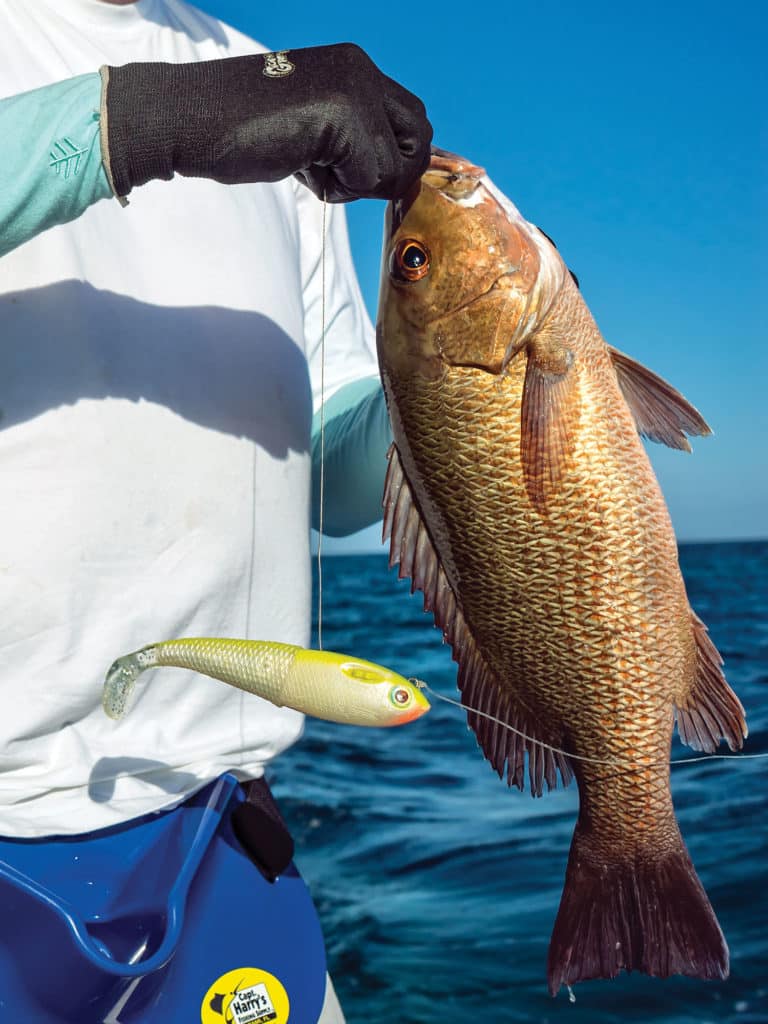
LAY OF THE LAND
As you approach Fort Jefferson from Key West, about 70 miles out, you start to find various areas of patch reef alternating with deeper channels. Over the past four years, Fidalgo has concentrated on particular depths. “We’ve fished as shallow as 6 feet of water, down to 20 feet,” he says, “but the magic depth is around 12 feet.” Gauge the wind and set up a drift that puts you over ideal depths and within casting distance of deeper water. Obviously, any sign of bait is a plus.
There’s certainly an early-morning bite, and though you’d expect high sun to curb action, things can get violent anytime. Cloudy or sunny, it doesn’t seem to particularly matter. Delph says wind direction and tide are not crucial, but a south wind is his least favorite. If you notice things heat up on a certain tide one day, be sure to repeat your pattern the next day.
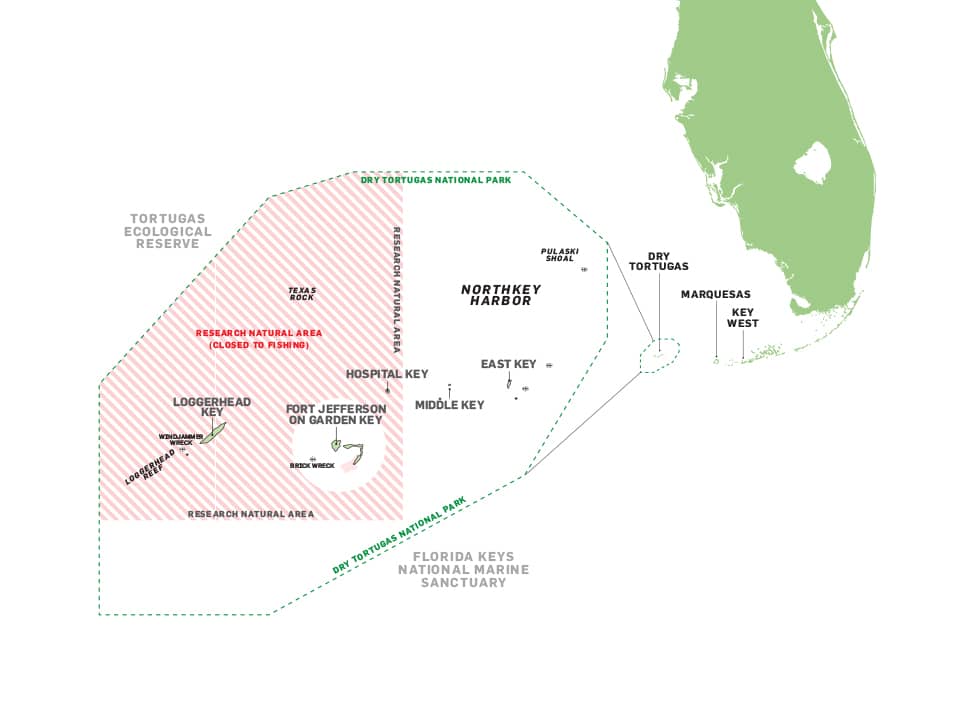
GETTING THERE
The ideal way to pop the Tortugas, given the long run, is on a multiday trip. If you’ve got your own sport-fisher, you can anchor at designated spots around Fort Jefferson (nps.gov/drto) and get in a full day without the worry of getting back to Key West. There are overnight charters as well, but be prepared to book a year in advance
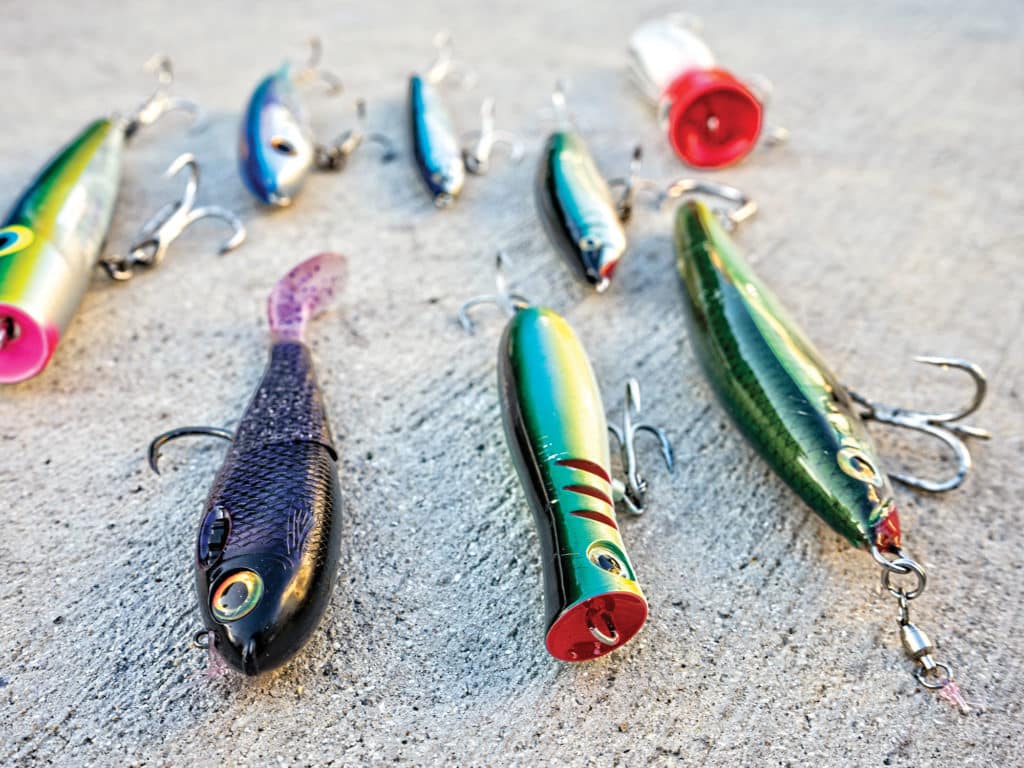
MIXED STRATEGY
Most of the grouper and snapper on the patch reefs run from 5 to 10 pounds and max out at around 15, but you’ll find kingfish, horse-eye jacks and jack crevalle to 20 pounds, and amberjack to 50. Either way, you need relatively hefty tackle. “They’ll take you down into the reef right away. You gotta move ’em quick,” Fidalgo says. Casting 4-ounce plugs also requires stout line: 40- to 50-pound braid with a 4-foot leader of 50- to 80-pound mono or fluorocarbon.
“We usually start with topwaters, and if things slow down, we’ll switch to sinking and suspending stickbaits,” Fidalgo says. Experiment with different popper cup sizes, from skinny pencil poppers to those with big cup faces, as well as jet styles designed to create bubble trails with longer sweeps of the rod. Retrieve aggressively — without pausing. You’re out to make a commotion and move the bait quickly. In calm conditions, try going to oversize walk-the-dog stickbaits, such as the Shimano Orca, Williamson Surface Pro or more obscure brands, such as the Smith Tobiika. Next, try going underwater with sinking stickbaits, such as the sinking Orca or the Strategic Angler Mikros. The best color schemes are those that emulate ballyhoo, with a bit of blue, but our biggest red grouper of the trip ate a Smith A Cup popper with a red head and white body.
The artificials-only game isn’t just about plugs. As we popped, Delph lifted and dropped a Spooltek swimbait behind the boat and had his hands full with mangrove snapper after mangrove snapper. Though we didn’t have any bucktails or soft plastics on board, I bet they’d pull in some fish as well.
If fishing topwaters slows, one bonus of the Tortugas is the fantastic vertical jigging. During the run out, you’re likely to encounter shrimp boats. Pull up behind one and drop 3-ounce speed jigs for blackfin tuna. There are also plenty of wrecks and ledges in the 90- to 300-foot range, where you should be dropping 5- to 9-ounce vertical jigs. Again, be combat-ready for strikes one or two pumps off the bottom, where goliath and black grouper hunt. As the jig ascends, you’ll encounter big mutton snapper, bruising amberjack and highly cooperative jack crevalle. For this, beef up your spinning reels to the 18000 or 20000 class; though the big girls will still break your heart, they’ll do it less often with heavier gear.
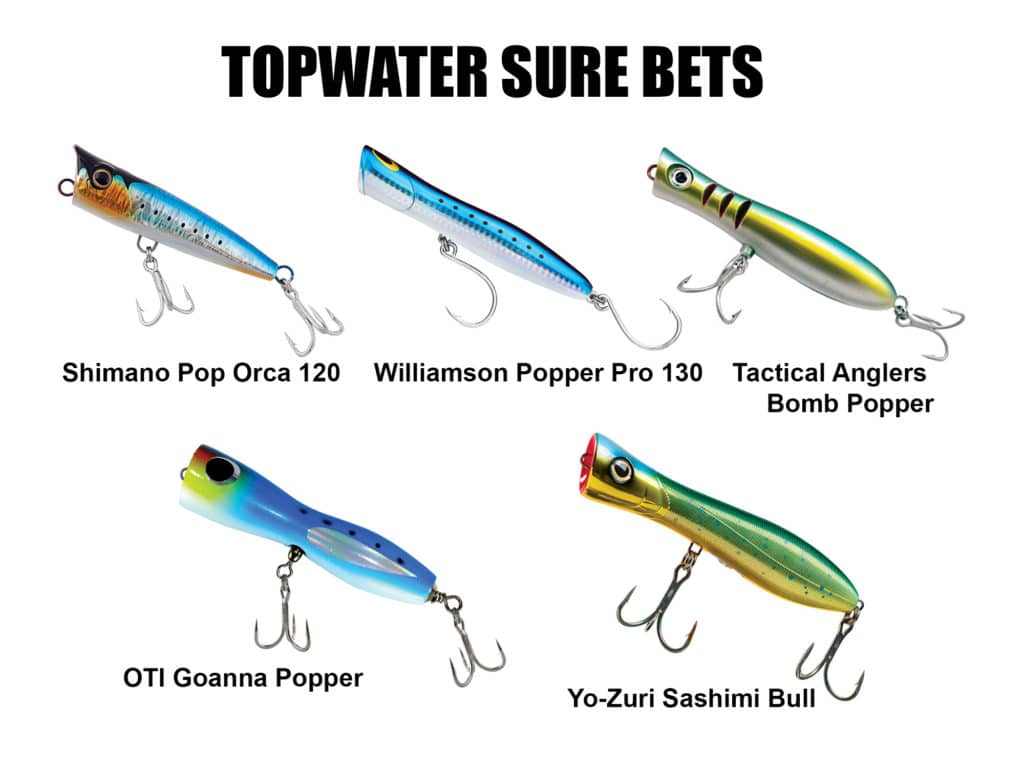
SWS Planner
Dry Tortugas, Florida
What: Grouper and snapper on topwater and sinking plugs; mixed bag on vertical jigs
When: December through April
Where: Dry Tortugas National Park and surrounding waters
Who: Anglers on seaworthy, well-equipped boats. National Ocean Survey Chart 11438 is crucial. Boating in national park waters requires a vessel permit, picked up free at the park headquarters at Fort Jefferson on Garden Key. The park allows overnight anchoring within 1 nautical mile of Fort Jefferson, on sand and gravel bottom only. The park does not sell food or water, so bring everything you’ll need. These captains can get you there and back:
Capt. Billy Delph (single-day trips) contact@delphfishing.com delphfishing.com
Capt. Yuri Vakselis (overnight trips) yuri@two-fishcharters.com tortugasfishing.com
Capt. Eddie Griffiths (overnight trips) capteddieg@mac.com fishcapteddie.com
SWS Tackle Box
Dry Tortugas, Florida
Rods: Casting/popping: 8- or 9-foot spinning, rated for 2- to 4-ounce plugs. Vertical jigging: 5-foot rods specific to vertical jigging, designed for 3- to 10-ounce jigs.
Reels: Casting/popping: 8000- to 14000-class spinning with fast gear ratios. Vertical jigging: 8000-class spinning for blackfin tuna; 18000- to 20000-class with slower gear ratios for deeper structure.
Line: Casting/popping: 40- to 50-pound braid with 4 feet of 50- to 80-pound mono or fluoro leader. Vertical jigging: 30- to 50-pound braid and 10-foot mono or fluoro leader on smaller tuna outfits; 50- to 100-pound braid with 10 to 15 feet of 80- to 125-pound mono or fluoro leader on heavier gear.
Lures: Casting/popping: 2- to 4-ounce poppers and stickbaits from Tactical Anglers, Smith, Yo-Zuri, Gamma, Lamble, Strategic Angler, Braid, Williamson, Shimano and Creek Chub; 1- to 3-ounce jigs and swimbaits, such as those from Spooltek and Hogy. Vertical jigs from 3 to 10 ounces, such as the Shimano Butterfly or Williamson Benthos.









